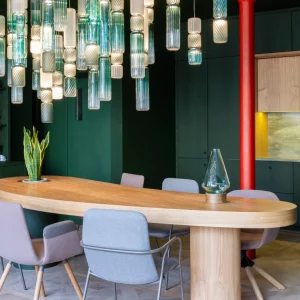The city will rely entirely on solar energy and other renewable energy sources, with a sustainable, zero-carbon, zero-waste ecology. The city is designed to be free of cars and skyscrapers and will be powered by the sun. It will host the headquarters of the International Renewable Energy Agency (IRENA).
Currently under construction and moving as per schedule, the city will be home to about 50,000 people, at least 1,000 businesses and a university. The estimated cost of the project is between $15 billion and $30 billion.
The new six million square meters sustainable development uses the traditional planning principals of a walled city, together with existing technologies, to achieve a carbon neutral and zero waste community. The desert’s greatest resource, the sun, will be the maximum used resource for the project. The biggest solar farm in the Middle East is constructed at the site to power the city and to make up for the burning of diesel and baking of cement in construction.
The city will feature a circular field of mirrors on the ground reflecting towards a tower in the middle. This tower will bounce the light down in a concentrated beam about to produce heat and drive generators. Masdar’s streets will be narrow so that buildings could shade each other. Wind towers will generate breeze for the city.
The project is supported by the global conservation charity World Wide Fund (WWF) for Nature and the sustainability group BioRegional. In response to the project’s commitment to zero carbon, zero waste and other environmentally friendly goals, WWF and BioRegional have endorsed Masdar City as an official One Planet Living Community.





